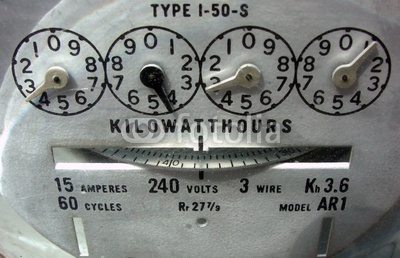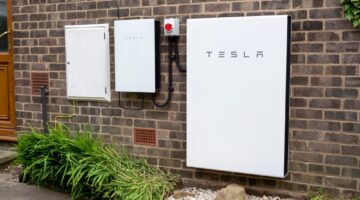
What is a watt? What is the difference between kilowatt-hours and kilowatts?
To help you get a better idea of how much energy you are using, and how that relates to the power of your appliances, we have tried to explain the difference between the terms Watt, Kilowatt and Kilowatt-hour in relative layman’s terms below – we apologise if any physics students are offended while reading this!
Once you get a good understanding of these key terms then you will also get to grips with the energy bill jargon and what energy suppliers constantly throw around in their marketing materials.
 Power is measured in kW
Power is measured in kW
You may have seen appliances like your microwave or vacuum cleaner come with a power rating. A typical microwave for example runs at 800W. Power can be viewed a little bit like speed; you could also view it as a measure of the flow rate. Imagine a water wheel on a river – it needs a certain flow rate of water down the river to be able to turn the windmill, otherwise it will just sit there doing nothing, because there is not enough force on the blades to turn them.
As the flow hits a certain level, the windmill kicks in to action. Now we wouldn’t talk about how much water is needed to turn the wheel – that would depend on the amount of time you want it to run – we would talk about the flow rate of the water.
So that is power and it is measured in kW.
Energy is measured in kWh
Energy is a measure of the total amount of power over a given period of time. So to take our water wheel with the windmill on top again as an example – the water has been flowing through the wheel for a whole hour now, which has produced the energy that is needed to turn the wheel. If we want to find the total amount of water that has passed through, rather than the rate, we need to multiply the flow rate by the time over which it has taken.
So to compare that to a microwave with a 800W rating. Using the microwave for 15 minutes is 0.25 hours. 800 watts is 0.8kW. Multiply the two together and you get 0.2kWh. So the total amount of energy consumed by running an 800W microwave for 15 minutes is 0.2kWh. For those interested, that is about three and a half pence worth of energy.
So just to make that absolutely clear:
Power= Energy / Time kW = kWh / h
Energy = Power x Time kWh = kW x h
Time = Energy / Power h = kWh / kW
Where will I see these units?
Power ratings are seen on all sorts of appliances – and having a lower power rating will obviously mean lower bills – as long as the time you have the appliance on is the same as a higher rated one. For example, if you have a really low power toaster, but it takes you twice as long to make your toast, chances are you are not actually saving any money, just dragging out the energy use over a longer period. The same goes for other appliances like ovens and microwaves – lower wattage doesn’t necessarily mean more energy efficiency!
Another place you will see power ratings are on lightbulbs. With the bulbs, lower wattage usually means less light intensity, but because of the different types of bulb available nowadays, it is better to look at lumens as a measure of performance, as this purely looks at light output. Ideally you want a lower wattage and higher lumens for the best performance of a bulb.
With other appliances like TV’s, computers and washing machines, lower wattage can be a little more useful. If an appliance performs to the same standard, in the same amount of time as a higher wattage model, chances are the appliance will end up saving you money and being more efficient. TV’s are a great example because even the most energy efficient LED TVs can have a great quality picture!
Think we missed something? Do you have a different opinion?
Comment below to get your voice heard…












No Comments yet! Be the first one.